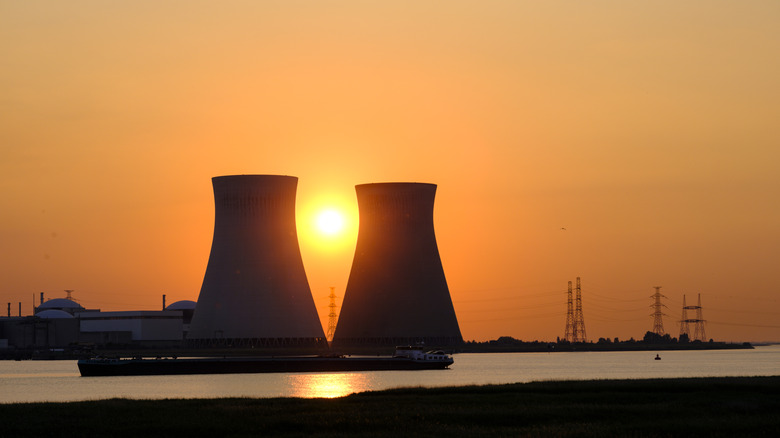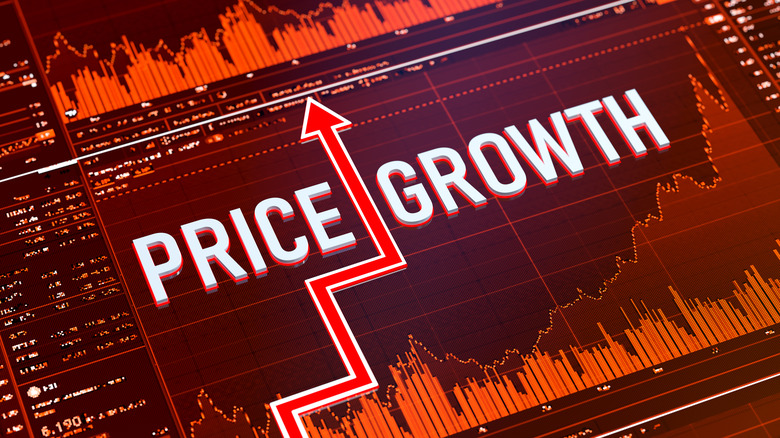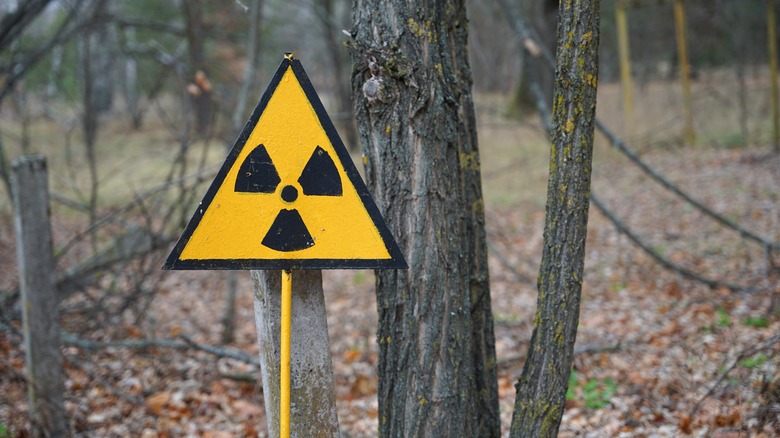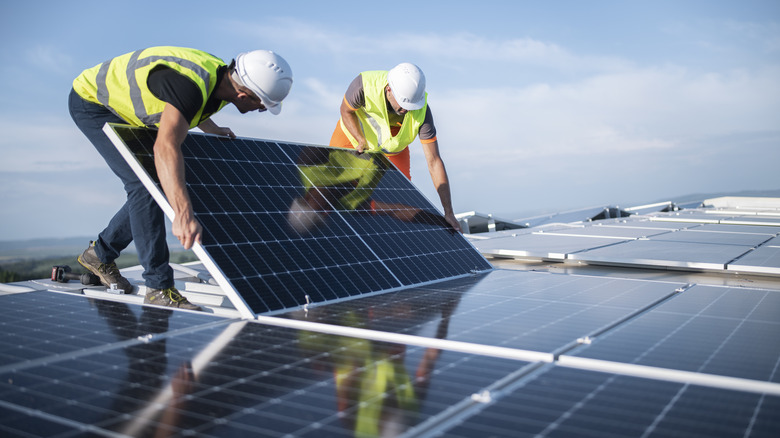The Reason Why America Doesn't Build More Nuclear Power Plants
The American energy sector is a complex network of production, storage, and consumption. In 2022, the U.S. Energy Information Administration reports a total production of roughly 4.24 trillion kWh at the utility-scale with another 58 billion kWh estimated to have been produced through smaller, solar capture systems. Of the commercially produced energy noted, roughly 60% was sourced through fossil fuel usage while 18% stemmed from American nuclear technologies.
This might come as a surprise to those who remember nuclear energy being hailed as a game changer in the battle for climate balance and the very future of our Earth. Vox's reporting on nuclear plant construction from 2016 indeed notes that nuclear energy appears to enter the spotlight and then recede again in a revolving, multiyear cycle. The relatively low utilization of this clean energy source that's been a part of our vernacular for decades comes at the crossroads of a few key quirks, however. For one thing, while international nuclear energy production has been booming in certain markets, the United States' physical size and the complexity of organizational politics at varying levels make American nuclear energy production a different kind of challenge. While it's a murky web to be sure, these are the key factors that limit the American nuclear industry today.
Costs have skyrocketed in recent decades
In the United States, the cost to build a new nuclear reactor is enormous. Estimates place contemporary construction projects at as high as $10 billion per reactor. This comes as a result of the massive concrete demands, safety inclusions, and many other factors. As well, once the build is finished, costs continue to pour into the operation of the facility—the difference between what is known as overnight construction costs and the operational price tag that comes afterward.
As of 2016, Vox reports that the overnight construction costs on nuclear projects launched two years earlier stood at $5,366 per kilowatt. In contrast, wind capture facilities cost roughly $1,980 per kilowatt in these building expenses at the time. In 2022, the EIA reported figures of $6,695 in base overnight costs for light water reactors and $1,718 for wind facilities, further driving home the stark dollars and cents of the matter.
This discrepancy in upfront costs makes nuclear technology a hard sell to those financing new energy projects across the country. While some other nations have made a concerted effort to build smaller, more numerous nuclear facilities to account for facets of the price tag, the U.S. energy sector has typically opted to build towering structures. Alternative power supply has therefore remained an attractive solution to new demands on the grid throughout much of humanity's modern, nuclear age.
Similarly, the 93 active nuclear reactors in America are situated at 55 power plants that can be found largely clustered around population centers. As a result, spatial constraints and overall demand appear to be pushing new projects of all types into new territories that simply can't justify the expense or require the massive output potential of a nuclear reactor.
Regulatory oversight is messy in the United States
The American energy sector is unlike that of many other nations. In the United States, there are dozens of noteworthy players in the development, storage, and delivery of power resources. This means that numerous conglomerate brands are competing with one another across the tapestry of the American landscape for business. Cheap construction and fast turnaround times are crucial considering the corporate and competitive faces of U.S. power production.
Mixed in with this desire to turn a profit is a complex regulatory landscape that must contend with local, state, and federal oversight and operational rules. What's more, the guidance on requirements and best practices can change midway through the development of a new nuclear reactor, potentially derailing the progress made on the facility and adding costly delays or required additions to the site. These pitfalls in the actual construction process for new nuclear facilities have all but eliminated the 'learning by doing' advantage that builds up over time with experience. Limited opportunities to build new resources alongside a confusing and consistently changing regulatory landscape means that every new project is almost assuredly different than the last.
Alternative clean energy sources are now competitive with nuclear production in many ways
The surge of clean energy resources in the American market has perhaps had a magnifying effect on the nuclear power sector. Nuclear power plants don't emit greenhouse gasses and add no carbon emissions, in particular. Yet, in comparison to other clean energy solutions, there's still a stigma surrounding the use of nuclear power. For one thing, the infamous Three Mile Island meltdown in 1979 set off a string of new worries over the safety of nuclear energy technologies on the whole. In contrast, there's no comparable panic over the safety of solar panels (even when it's clear that their manufacture adds an environmental cost to the renewable equation).
As well, solar, wind, and even new wave capture technologies are rapidly improving both the cost for users and the efficiency of energy production. This has led to a rapid accumulation of new renewable energy farms around the country, spiking adoption and the total production value of these systems above that of the nuclear sector. Coupled with a hesitancy to spend new capital on nuclear reactors, it's clear that the marketplace simply doesn't possess the wherewithal to invest heavily in a nuclear future—for better or worse.



